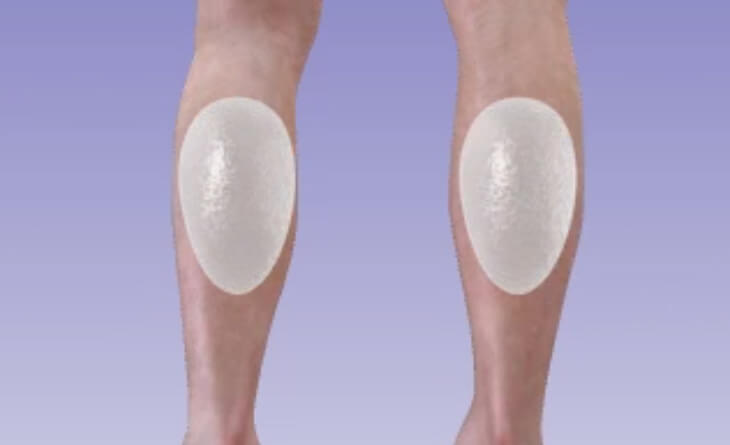Who should have it done?
Calf Anybody who is not happy with the size and shape of his calf muscles to the point that they avoid wearing garments that expose their legs is a good candidate for calf augmentation. For many, the calves are a difficult area to gain muscle and shape from exercise or lifting weights.
Calf implants can also be used to correct deformities resulting from injury or nerve diseases that result in muscle deterioration. Such deformities include, polio, club foot, spina bifida etc.
Generally, anyone in average physical condition or good health and with realistic expectations can be a candidate for calf implant surgery. Please read FAQ’s for more information.

What kind of calf implants are used for this surgery?
A critical element in determining the right size and shape is based on the skill of the surgeon who can assess the proportions correctly, and properly sculpt and place the implant, thereby anticipating any changes after the surgery.
Silicone gel implants are usually used for calf augmentation. Silicone-gel filled calf implants usually come in symmetrical a cigar-shaped size with volume ranges from 50-220cc. Many are also available in anatomical sizes (asymmetrical), where the upper portion of the implant is usually larger in volume than the lower section. Most silicone-gel implants have a shell that is composed of silicone elastomers (medically approved grade), and a volumetric gel that is made of cohesive silicone, so it won’t migrate to other areas if the implant is somehow ruptured.
Sometimes, depending on the size of the patient’s ankle, circumferential liposuction will also be performed at the close of the procedure to sculpt the areas above the ankles and subcutaneously above the calf muscles to enhance the overall look of the leg.
Either two separate implants or a one-piece implant can be used for calf augmentation. Having two implants creates a more natural look for the results, but one-piece calf augmentation implants can be used for reconstruction surgeries.
Where do I begin?
A consultation with your Dr. Ashish Davalbhakta, is the first step to learn how calf augmentation can improve the appearance of your calves. This consultation will fully educate you in a non-pressured environment and will include a discussion of your goals, options available for calf augmentation correction, likely outcomes, potential risks and complications.

What are the possible risks and complications?
As with any operation there are certain risks. The most common risks include bleeding, infection, nerve and/or muscle damage, slippage, asymmetry and scarring. Although these events are usually infrequent, they sometimes can occur. These will be discussed with you during the consultation for your procedure.
What is the Progress and healing period?
Surgery to place calf implants typically requires about a couple of hours, but this depends on the number of implants being inserted. These implants which may be one to each leg or two depending on the desired effect are placed through small incisions in the creases behind the knee. A person may desire to have only the inner head of the muscle enlarged, the outer head, or both. The result is that the existing musculature is made to appear larger and more defined.
